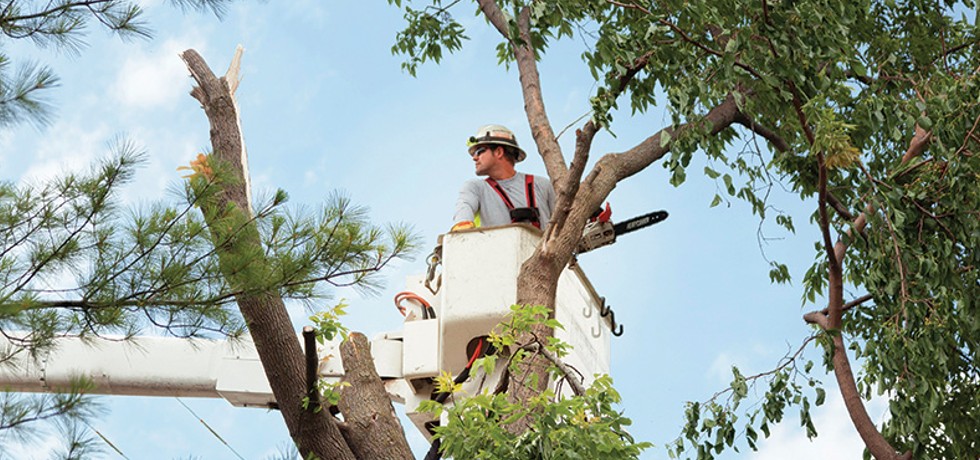Be proactive to prevent problems
Check trees for hanging and/or dead branches, overgrown limbs and anything growing into overhead electric lines. Also check for emerald ash borer damage. Eliminating those infested trees could prevent massive problems in a storm.
Be safe around overhead lines
Be aware of overhead power lines and avoid any contact with them, including from your ladder and tools.
Never prune trees near power lines yourself. This should only be done by We Energies or our line clearance contractors. If you see trees with branches growing near power lines, call us at 800-242-9137. We will evaluate and determine the best course of action.
We prune trees near power lines on a regular cycle — typically every six to eight years — to maintain reliable electric service. Homeowners receive a letter and/or a door hanger when work is anticipated. The preference is to prune branches, but in some cases the tree may need to be cut down. You are not charged for this service, but because you own the trees on your property, the removal of most debris is your responsibility.
Free wood chips may be available when we are working in your area. Review all the details on our website.
Plant the right tree in the right place
Keep in mind power lines and other utility equipment — above and below ground — when planting. Any tree growing near a power line can cause a power outage or safety risk. A tree growing too close to an overhead power line gives electricity a path from the power line to the tree and to the ground. This can result in electrical outages, fires and shock hazards.
Follow these planting guidelines to enjoy your trees and avoid issues as trees reach mature height.
Mature tree height Distance from power lines
Up to 20 feet 24 feet
20 to 45 feet 24 to 48 feet
30 to 70 feet 48 feet or more
High-voltage transmission lines owned by ATC have different clearance requirements than our lower-voltage distribution lines. Go to atcllc.com for more information.
Equipment clearances
Maintain proper clearances between bushes and trees and our equipment to allow us access during routine maintenance or in an emergency. Keep a clearance of at least 10 feet from the front of the equipment (where the lock is located) and at least 3 feet on each side.
Call before you dig
Spring yard work often includes a lot of digging. Be safe around underground natural gas and electric lines, and other buried public utilities in your yard. Contact Diggers Hotline at least three working days before you begin any digging project. It’s a free service that marks the location of public underground utilities (natural gas, electric, cable and water). You can reach Diggers hotline by calling 811 or 800-242-8511, or online at diggershotline.com.

